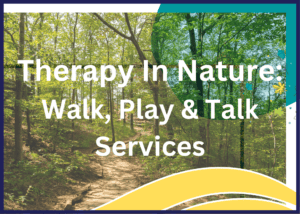After-school meltdowns: Why are they happening, and what can we do to help?
September is here and that means one thing – back to school. There are so many transitions happening during this time, including new routines to adjust to for most members of the household. But there may be one thing that is not so welcomed this time of year – the after school meltdown.
Many parents question how they can receive positive feedback and comments from teachers and school staff about their child’s behaviour during the day, only to see the exact opposite at home.
These meltdowns are an expected and common situation for so many families. Although common, parents and families may not know that this is a phenomenon called the “after-school restraint collapse.”
So what is the after-school restraint collapse?
Simply put, kids spend their entire day at school using the majority of their emotional capacity trying to hold their emotions in to stay regulated. But at the end of the day when kids lose their capacity to self-regulate, and we can see meltdowns. Because where do all those pent up emotions get released? In the safety of their own home, around those they are closest to and care most about.
It takes a lot of self-control to be able to hold all of that in during the day. So just like a volcano when the boiling point is reached, an eruption occurs. This is when it is expected to see meltdowns: variations of whining, crying, yelling and moodiness, among others.
What’s best to avoid?
It’s important to point out that kids are not having meltdowns because they want
to or are choosing to. They are having big reactions because they cannot
physically, mentally or emotionally keep themselves together anymore. They are
not able to “just stop it” or “snap out of it”.
So, stop trying to fix it. When we see kids experiencing uncomfortable emotions, we
often want to jump into problem solving mode to eliminate the distress. We are wired this way! Typically
we will try and offer suggestions or reassurance that all will be okay. We want to avoid these as our go-to reactions as we can easily invalidate feelings and rob kids of the opportunity to find their own solutions.
So what would be an appropriate replacement? To listen.
How can you help ease the after-school transition and avoid meltdowns?
1. Listen
If your child is able and willing to communicate their feelings – simply listen and acknowledge you have heard what they are telling you. Saying “that sounds really hard” seems so simple, but can be so powerful for them to hear in that moment. If your child struggles to verbally communicate their feelings, or has not yet developed their emotional awareness skills, they are still communicating with you. You will just have to pay closer attention to their non-verbal cues, because behaviour is communication. This is now an opportunity to help teach them emotional awareness and label what they may be feeling. For example, “I notice that….” and state the pattern you have observed.
2. Give time and space
Keeping in mind that we don’t want to jump into problem solving mode. Sometimes giving kids time and space to unwind after the day at school is all they need. Just like adults need time before heading in the house after a long day at work (I see you parents taking that extra 15 minutes in the driveway), kids need that same opportunity.
As much as we would like to avoid meltdowns and big emotional interactions, sometimes they need to run their course and no intervention is necessary (unless safety is a concern). We are mindful that this can be easier said than done as there are often other things that are pulling at our attention at home, such as preparing dinner or to head to an extra-curricular activity. In addition, you can communicate to your child that it is okay to let their feelings out if you are noticing that this is needed and that you are providing them with the space and opportunity to do so. Even though they may be letting out yells and screams in the following moments, you are showing them that you understand that they have experienced some tough times in their day.
3. Offer a snack
Yes – hanger is real. When hungry, it can often accentuate feelings of anger and frustration, resulting in psychological and physiological reactions. While hunger isn’t often the cause behind the big after-school reactions, it can be one of the factors that prolongs it. Offering your child something to eat can be an opportunity to provide a distraction from the uncomfortable body sensations from releasing their built up emotions. It can also help to regulate their breathing, as calm breaths are easier to help eat and digest food.
4. Provide them with an emotional release tools
Finding and providing activities and hobbies that your child enjoys can assist them in releasing their emotions and decompress at the end of the day. This can be provided through both structured and unstructured activities, as both are helpful and necessary in kids routines. Unstructured time can help foster creative expression, while structured activities can provide social support and interaction. Activities like drawing/colouring, physical activity, family engagement or even doing nothing can help be outlets. Emotional regulation skills can also be taught at home. Concepts such as breathing exercises and guided meditations are easily accessible resources through apps and websites. It is also important to help your child find (and use) coping tools that work for them. This can look like many things such as their favourite games and hobbies, listening to music, reading a book, the possibilities are endless.
5. Take things slow
Once your child is home from school, the first thing we want to do is usually ask them about their day. It can be worth waiting some time before asking them how school was, or encouraging them to do their homework. We mentioned time and space, and that is applicable here too. The first few moments after arriving home are often when these big behaviours come out, so try and give your child some time to decompress, especially at the beginning of the year. When these transitions are still new and routines are still being learned, kids are more likely to have a hard time managing.
6. Be proactive
Although we might not be able to completely avoid the after-school meltdowns, or “restraint collapse,” there are some ways we can try and mitigate them.
- Connection before heading to school. Adding one more thing to the list in the morning can seem impossible and daunting. However, as little as 5 minutes of meaningful connection in the morning can help to ease your child’s transition into the separation of the day.
- Remind them of your connection. Even if you are not physically together while they are at school, it is important to remind them that you are still connected. The book “The Invisible String” can be used to show them what this can look like.
- Stay connected. Providing your child with something tangible for their school day can help them to feel supported to manage through even if you are not there face to face with them. Using an invisible string like just mentioned can be a reminder of you while your child is at school, but sometimes they need more. A note in their lunchbox is another easy way for you to remind them of your connection. There really are so many options, feel free to be creative.
7. Ask for support
Finally, it is okay to feel like you do not know what to do or that you do not have all the answers. You are doing the best you can, with the resources that you have. If you feel like both you and your child are struggling to manage and cope with the after-school transition, ask for support. Connect with your child’s teacher and provide them with the information of what you have been observing at home. Teachers may be able to offer some help that can ease your child’s emotional energy at school. For example, chunking/batching work, offering breaks, etc. If you feel like you are also having a hard time helping your child find appropriate coping strategies, reach out to us here (or another local counselling service) as we can provide a safe space for them to share their worries, as well help them to build their emotional awareness and identify their own coping strategies.

Ashley Backstrom, MSW RSW
Ashley is our newest Child & Family Therapist with a special interest in working with children with big feelings and big behaviours. To learn more about Ashley, see Our Team page.




